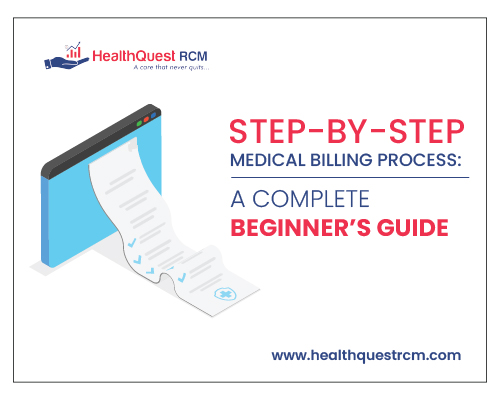Medical billing plays a critical role in ensuring healthcare providers are paid correctly for their services. Whether you’re a healthcare professional or someone curious about the system, understanding how the medical billing process works can feel overwhelming at first. But with the right guide, it becomes manageable.
In this beginners guide to medical billing, we’ll walk you through the step-by-step medical billing process so you can better understand its flow and importance.
Step 1: Patient Registration
The process begins when a patient schedules an appointment. During this stage, the provider collects essential information such as:
- Personal details (name, date of birth, address)
- Insurance information
- Medical history
Accurate data entry here is vital to avoid billing errors later in the cycle
Step 2: Insurance Verification
Before services are rendered, the patient’s insurance coverage is verified. This includes:
- Confirming policy status
- Determining covered benefits
- Identifying co-pays and deductibles
This step ensures that both patient and provider know what will be covered.
Step 3: Patient Encounter and Documentation
After the medical service is provided, documentation begins. The physician records the diagnosis and treatment using standardized codes (ICD and CPT). This clinical documentation is the foundation of the billing process.
Step 4: Medical Coding
Medical coders review the provider’s notes and assign appropriate codes. These codes translate diagnoses and treatments into billable information. Accurate coding is essential for timely reimbursement.
Step 5: Charge Entry and Claim Submission
Next, the coded information is entered into the billing software. A claim is then generated and submitted to the insurance company, either electronically or manually. This is a critical step in the step-by-step medical billing process.
Step 6: Claim Processing
Once the claim reaches the insurer, it is reviewed for:
- Policy coverage
- Coding accuracy
- Service necessity
The insurer will either accept, reject, or deny the claim.
Step 7: Payment Posting
If approved, the payment is posted to the provider’s system. Any differences between the billed amount and paid amount (like co-pays or deductibles) are also recorded here.
Step 8: Patient Billing
After insurance settles its portion, the remaining balance is billed to the patient. Clear and timely communication here ensures faster payments and fewer disputes.
Step 9: Follow-Up and Appeals
In cases where a claim is denied or underpaid, the billing team follows up with the insurer. Appeals may be submitted with additional documentation to support the claim.
Step 10: Reporting and Analytics
The final step involves analyzing financial and billing data to identify trends, bottlenecks, and improvement areas. This step supports better decision-making and practice management.
Why Understanding the Medical Billing Process Matters
Knowing how the medical billing process works benefits both providers and patients. For healthcare practices, it ensures timely revenue. For patients, it leads to greater transparency and fewer surprises.
If you’re just starting out, this beginners guide to medical billing offers a strong foundation. As you gain more experience, the finer details will become clearer.
FAQs: A Step-by-Step Guide to the Medical Billing Process
Medical billing is the process of submitting and following up on claims with health insurance companies to receive payment for services provided by healthcare providers.
It starts with patient registration and ends with payment posting and reporting. Each step—from coding to claim submission, it is essential for accurate and timely reimbursement.
Verifying insurance helps determine what services are covered and prevents claim denials due to ineligible coverage or incorrect policy details.
Healthcare providers, billing specialists, medical coders, and revenue cycle management teams all use this process to ensure smooth operations and consistent revenue.
Yes! This guide covers all the core steps and is designed to be easily understood by those new to the billing process.

